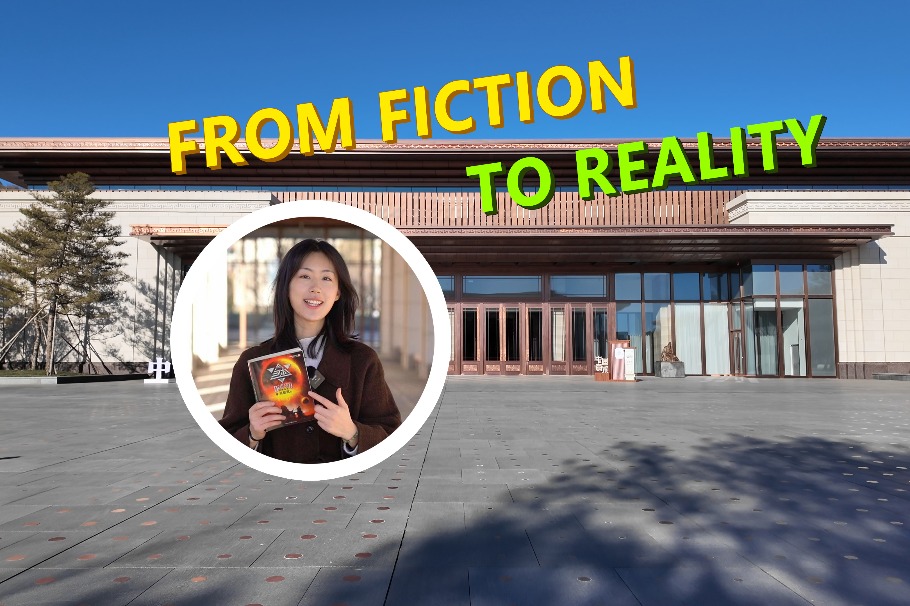New Year celebrations enter global mainstream
By FU JING,CECILY LIU,LIA ZHU,LOW SHI PING | Updated: 2018-02-21 23:44

Events that took root in Chinatowns now light up city squares worldwide
Lunar New Year celebrations, exported around the world by Chinese miners, sailors and workers in the 19th century, expanded during the 20th century as Chinese communities developed vibrant Chinatowns in major cities. Now, as millions of Chinese and non-Chinese alike celebrated the Year of the Dog over the weekend, Chinese New Year has moved from Chinatown to Downtown.
It was impossible to move in some parts of central London on Sunday as hundreds of thousands of people watched lion and dragon dances, parades and performances marking the start of the Year of the Dog.
The celebrations, which organizers said were the largest outside of Asia, started with a parade that featured 50 Chinese dragon and lion dance teams making their way from Trafalgar Square, through London's West End to Chinatown.
Similar celebrations have become popular around the world, with grand events being organized to attract the Chinese community as well as mainstream society.
In London, stage performances began at noon in Trafalgar Square, with firecrackers heralding the start of the celebrations. Pop-up shops and restaurants surrounded the square, offering visitors authentic and diverse regional Chinese food and the chance to buy traditional souvenirs and colorful decorations.
This year's celebrations had the theme of "Celebrating the 'Golden Era' for UK-China Relations", referencing a phrase that became popular during President Xi Jinping's state visit to the UK in 2015.
Londoner Andy Leung has been involved in the city's Chinese New Year celebrations for several years, as a performer and producer, and watched them grow.
"When I got involved it was still a community event, run by and purely for the Chinese community," he said. "It wasn't purposely put on to attract tourists."
But it has grown over the years, moving to Trafalgar Square. This year's event was expected to attract 200,000 people.
"We have more major London companies and city officials and offices involved, making it the huge event it is now," Leung said.
Sadiq Khan, the mayor of London, added that Chinese New Year is always a joyous time on the city's cultural calendar.
"London is open to all people and all communities. That's why I'm so proud of the Chinese New Year festivities here in the capital," said Khan.
In Brussels, 200 red lanterns illuminated the city as a prelude to the seven-day Chinese Lantern Festival, which starts on Feb 22.
The lanterns were set in five places in Brussels, including the Grand Place and Central Station. The lanterns show the beauty of Chinese architecture, artifacts and landscapes with traditional craftsmanship.
"The lanterns were all made in China, and we used 12 containers to bring them to Brussels," said Yang Mingxin, the engineering project manager of Zigong Lantern Culture Industry Group of Sichuan province.
Ariana Fonteyne said: "Each year, we come to the center to see the parade and performance. My father has been interested in the Chinese for a very long time. He has introduced Chinese culture to me, my mother and my brother."
The family, which lives in Belgium, has celebrated Chinese New Year for 15 years. "I love the character of the dragon and the strong colors and impressive dances. It's something really different from my own culture. It's magic," she said.
In San Francisco, the New Year was ushered in at California's state buildings, a tradition for 14 years. Chinese Consul General Luo Linquan wished the community an auspicious New Year.
Various festivities are being held in the San Francisco Bay Area throughout February and in early March.
The San Francisco Symphony will hold its 18th annual Chinese New Year Concert, and a Chinese New Year Celebration will be held during an NBA game between the Golden State Warriors and the Oklahoma City Thunder later in the month.
"The celebration of the Lunar New Year was brought to California by early Chinese immigrants who started to arrive during and shortly after the Gold Rush and has been very important for the Chinese in the US," said Yong Chen, a history professor at the University of California, Irvine.
For many years, the celebrations remained within the confines of Chinatowns and were considered exotic and foreign, he said.
As the number of Chinese people in the United States increases, more non-Chinese have become aware of and started to celebrate Lunar New Year, he said.
"The broadening of the awareness is also due to the shared celebration of other Asians, such as Vietnamese, in the US," he added.
Chinese New Year celebrations are even more deeply ingrained in Singapore and Malaysia, where ethnic Chinese constitute three-fourths and one-fourth of the populations, respectively.
On Jan 27, Singapore Chinatown's official light-up ceremony took place, and its celebrations will last for seven weeks.
Thousands of handcrafted lanterns in the shapes of bamboo, oranges and octagons, with auspicious Chinese words, decorate the area.
Soaking up the New Year spirit was retiree Lim Heng Fong, who visits the Chinatown light-up ceremony each year and also shops for home decorations.
"It puts me in the mood for the festival," she said. "I also hope some of the positivity from the happy atmosphere rubs off on me during the year."
Along with her husband, Lim heads off to the nearby River Hongbao — another fixture on the Singapore calendar during Lunar New Year — at The Float @ Marina Bay.
This year, 35 craftsmen from Sichuan were employed for three months to create more than 500 lanterns for use in 60 displays.
Fireworks shows will take place every night at River Hongbao's 11-day event.
Public celebrations aside, Lunar New Year in Singapore has a more personal spin, with families typically gathering under the roof of the patriarch or matriarch to mark the occasion.
Contact the writers at cecily.liu@mail.chinadailyuk.com
Bo Leung in London and Wu Nian in Brussels contributed to this story.
























